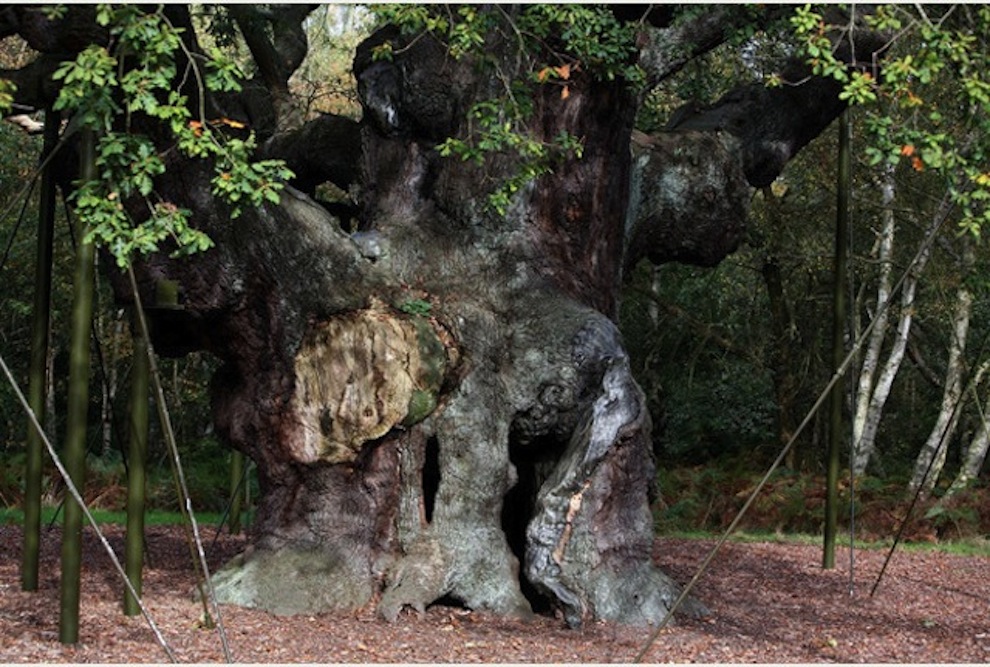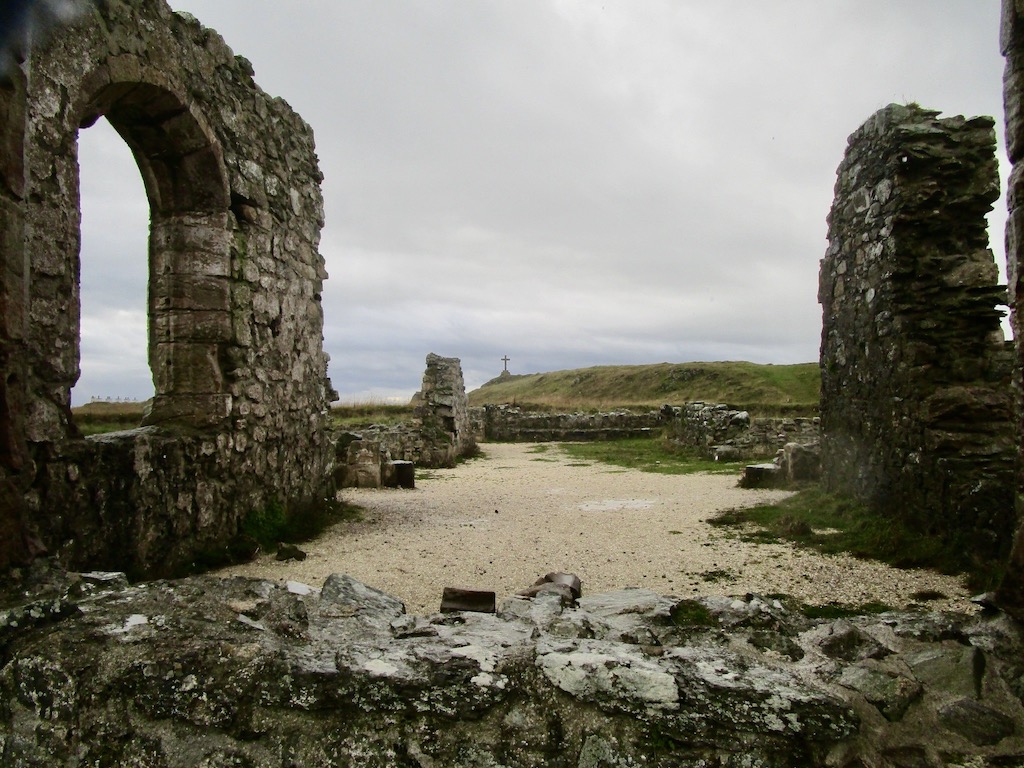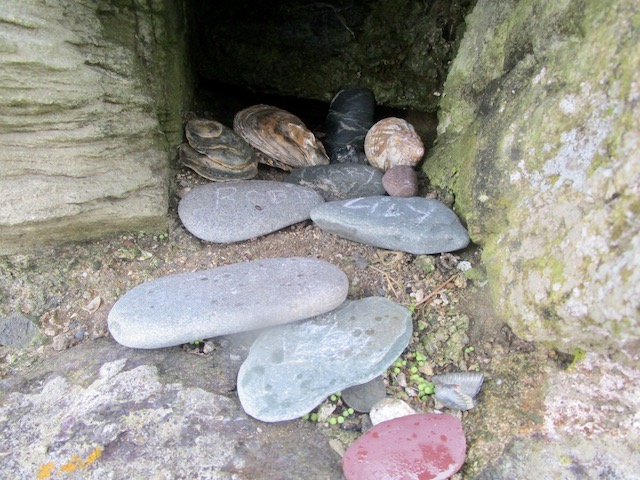
* This week Sherwood’s Major Oak [pictured above] was named England’s Tree of the Year by the Woodland Trust. It goes on to compete in the European Tree of the Year contest in February 2015. Here’s a story about my visit to Sherwood Forest a few years back.
The Sheriff of Nottingham has changed a fair bit since Robin Hood’s day.
Granting me an audience on an autumnal evening at Nottingham Castle, the Sheriff arrives in a flowing, medieval skirt and answers to the name of Jeannie. It’s enough to make Keith Allen, who plays the Sheriff in the TV series, turn to drink. She says:
“I used to watch Robin Hood films on a Saturday morning and he became my childhood hero – as he is to many people from Nottingham.”
“We are proud of Robin and refute age-old suggestions that he was, in fact, a Yorkshireman,” says Jeannie Packer, whose role as Sheriff is purely symbolic and who works as an elected city councillor by day.
Folk hero
With the return of the popular BBC TV series, I’ve come to Nottingham for an exclusive preview of two accompanying attractions: an exhibition at Nottingham Castle, Robin Hood Up Close, and an interactive audio trail, In the Footsteps of Robin Hood, which retraces the trail blazed across Nottinghamshire by Britain’s favourite outlaw.
The former is a walk-through tour of sets, costumes and scenery from the TV series which devotees will love. Screens display interviews with cast members, while props are dotted throughout the exhibition’s three rooms upstairs in this magnificent 17th-century ducal mansion, built on the site of the original medieval castle.
Afterwards, I explored the manicured grounds and admired the dramatic statue of Robin, bow drawn, which stands just outside the castle walls. But I was keen to get under the skin of the legend, whose story remains shrouded in mystery and folklore.
With commentary available to be downloaded to mp3 players or on CD, and an accompanying map, the new audio trail is designed to be self-guided. But to gather an even deeper insight I set out with John Charlesworth, a self-styled heritage interpreter who acted as a consultant on the venture.
Audio trail
From Nottingham Castle at the far south of the trail, we head first for the pretty village of Edwinstone, the hub for visitors to Sherwood Forest, and home to the Church of St Mary where, according to legend, Robin and Maid Marian were finally married.
The village is a haven for Robin Hood fans with pubs, restaurants and guesthouses all trading on its close association with the legend.
John and I follow a tree-shrouded path from the edge of the village into Sherwood Forest itself, passing a small visitors’ centre in a clearing, before delving deeper into 450-acre forest in search of the famous Major Oak, believed to be Robin’s former hideout.
As we walk on woodland paths over pine combs and chestnuts, John tells me that the first written references to Robin Hood date back to six medieval tales recorded at the end of the 15th Century, although minstrels were singing tales of Robin for several centuries beforehand.
“We set out to evoke the legend to give people a flavour of Sherwood and explore some of the myths around Robin Hood,” he explains.
“He was essentially a highwayman, waylaying people on the Great North Road, the modern-day A1, but his infamy has changed with the times.”
Following the 50-mile trail takes us to seven key sites overall.
Each of the locations boasts a crossbow-shaped interpretation unit. Made out of carved wood into which a screen is set, these interactive units complement the audio commentary with a brief televisual synopsis touching on a particular aspect of the Robin Hood story.
The whole trail is best tackled by car but none of the main sites are more than half a mile from the Sustrans National Cycle Route.
Country estate
Driving northwest from Edwinstowe village, Rufford Abbey, an English Heritage property, is an imposing country mansion surrounded by verdant woodland.
One of the triangle of primary sites, I find the candlelit remains of the 12th-century Cistercian monastery in the grounds, with its ancient manuscripts and medieval tapestries, an atmospheric backdrop to learn about Robin’s antagonistic relationship with the Church.
From here we head north to another location, Clumber Park, a sprawling National Trust property and formerly a major deer-hunting park. Robin would have hunted for food here, defying the forest law enforced from the 12th to 14th century.
But instead of wild beats, I find an oasis of tranquility with a walk around the huge lake, a stroll along the sweeping avenue of lime trees and a moment’s contemplation in the tiny Gothic chapel.
Dark dungeons
Finally, Cresswell Crags, located on the trail’s northwest spur, is not only home to the only ice-age cave art found in the UK, but also caves where Robin is alleged to have hidden while fleeing the Sheriff of Nottingham with a bounty hanging over him.
The caves are the now domain of archaeologists, but I still get a sense of feeling like a fugitive, hiding in the dank chambers with rats scurrying around my feet, before climbing back in the car to return to castle.
“What I like most about Robin is the way that the legend can be adapted to reflect the social issues of the times without damaging the core of the story,” says John.
Back at the castle, I’ve survived my encounter with the Sheriff without being flung in the dungeons.
But, as I take my leave, she fixes me with a steely gaze. “I think this new trail will finally lay to rest the claims that Robin Hood was from Yorkshire,” she says.
“Robin Hood is Nottingham and Nottingham is Robin Hood.”
Gazetteer
Experience Nottinghamshire
Sherwood Forest’s Major Oak named tree of the year
* This story was first published in the Daily Express in 2007. Liked this? Try also Reading up on D H Lawrence around Nottingham.
Post your comments below.




